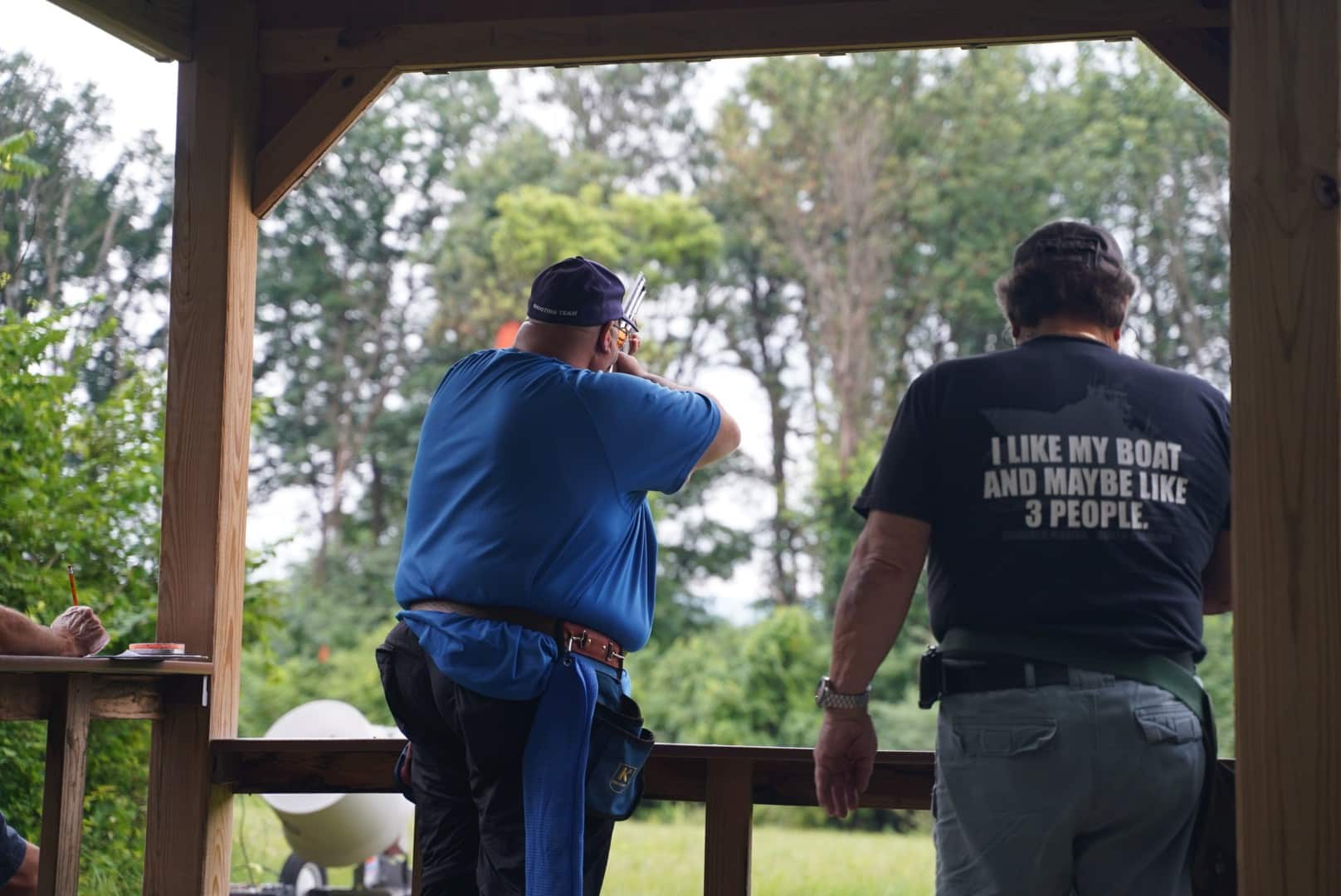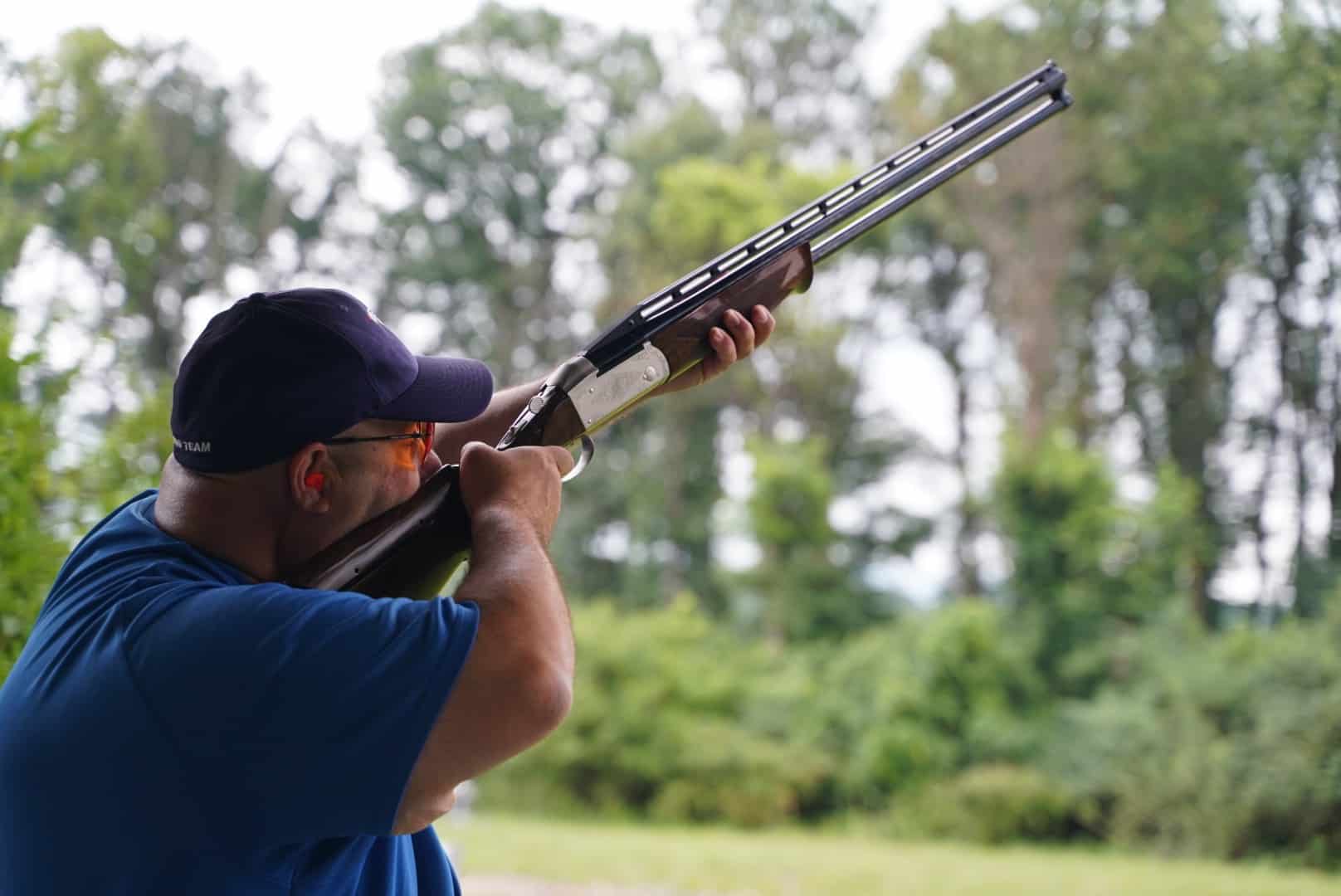
Many clay sport shooters struggle with consistent accuracy when targeting fast-moving clay pigeons. This guide covers essential techniques, equipment choices, and practice methods that help shooters develop better marksmanship skills for sporting clays and skeet shooting. Master these proven strategies to break more targets.
Master the Fundamentals of Shotgun Shooting
Mastering shotgun fundamentals creates the foundation every clay shooter needs to hit more targets consistently. These core skills separate casual shooters from those who break clays with confidence and precision.
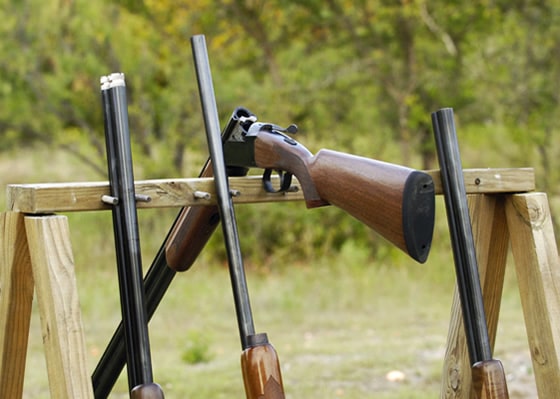
Proper Stance and Grip
A solid shooting stance forms the foundation of accurate shotgun shooting for clay sports. Shooters should position their feet shoulder-width apart with the strong-side foot slightly back, creating a stable platform that absorbs recoil naturally.
The body weight should lean slightly forward onto the balls of the feet, allowing for smooth movement while tracking targets. This balanced position enables quick adjustments during sporting clays and maintains control throughout the shooting sequence.
The support hand wraps around the fore-end with fingers pointing forward, providing steady control during target acquisition. Both hands work together to create a unified hold that reduces muzzle movement and improves follow-through on each shot.
Mounting the Shotgun
Proper shotgun mounting is the foundation of accurate clay shooting. Poor mounting technique often leads to missed targets and inconsistent results, especially in sporting clays.
Always bring the gun to your face—never your face to the gun. The stock should fit snugly into the shoulder pocket, creating a stable platform for consistent, controlled shots.
Cheek placement on the comb is critical for sight alignment and has a major impact on accuracy. A consistent gun mount removes variables that can affect performance, ensuring the dominant eye naturally lines up with the barrel.
Focus and Follow-Through
Focus determines where clay targets break, and most shooters struggle because their eyes dart between the gun barrel and the clay. A shooter must lock their vision on the front edge of the clay pigeon and maintain that focus throughout the entire shot sequence.
Your eyes are the most important part of your shot because the brain naturally calculates lead and timing when the eyes stay glued to the target, making accurate shooting techniques feel automatic rather than forced.
Follow-through separates good clay shooters from great ones, as many hunters stop their gun swing the moment they pull the trigger. The shotgun must continue moving smoothly in the same direction for at least six inches after the shot fires.
This continued motion ensures the shot pattern stays on target and builds consistent marksmanship habits that transfer directly to hunting scenarios.
Choose the Right Equipment and Setup
Choosing the right equipment makes a huge difference in clay shooting accuracy. A shooter’s gear directly impacts their performance and confidence on the range.
Select the Right Shotgun and Choke
Choosing the right shotgun is key to accuracy in clay shooting. Semi-automatics allow quick follow-up shots, while over-unders offer two choke options for varied targets. Barrel length also matters—28–30 inches typically provide smoother swings. Proper gun fit ensures consistent mounting and better accuracy.
Chokes control shot spread and affect how easily targets break. Improved Cylinder works best for close shots under 25 yards, Modified excels at mid-range, and Full delivers tight patterns for distant targets but demands precision. Many shooters switch between Skeet, Improved Cylinder, and Modified chokes depending on station and target distance.
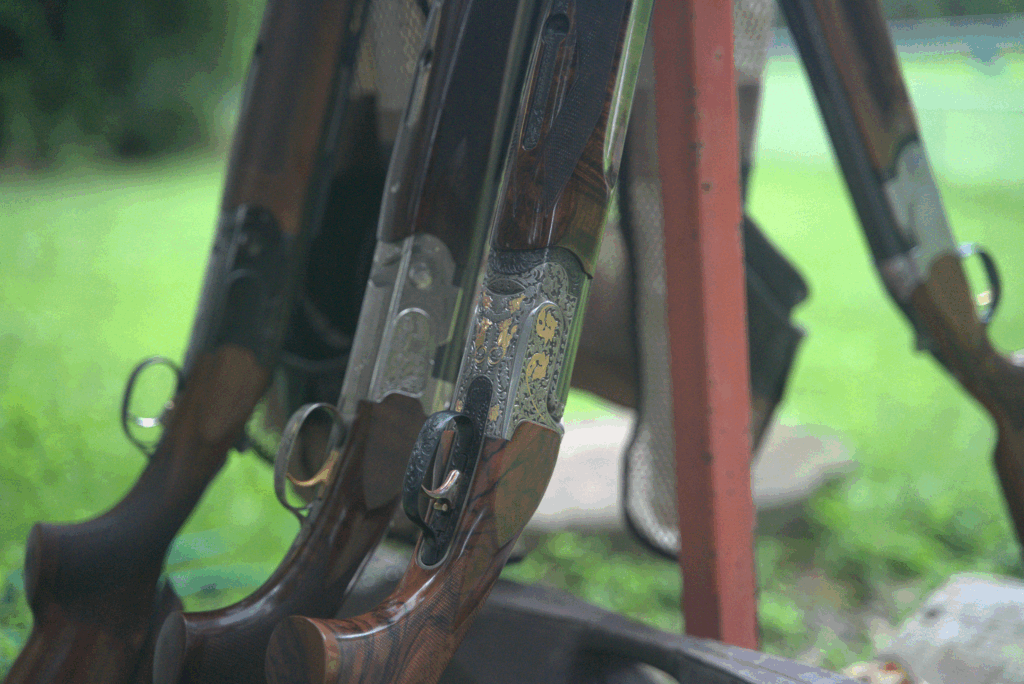
Ammo Selection
The right ammunition greatly impacts accuracy and consistency in clay shooting. For sporting clays and skeet, target loads are ideal—they produce less recoil while offering solid control. Most contain 1 to 1 1/8 ounces of shot, enough to break clays without excessive kick.
Shot sizes #7.5 and #8 are most common, providing dense patterns for hitting fast-moving targets. Quality shells ensure consistent patterns and velocities, while cheap ammunition can cause irregular spreads and missed shots.
Experienced shooters test different brands and loads to match their shotgun and shooting style—some prefer faster loads for long shots, others choose standard velocity for smoother follow-ups. The goal is reliable cycling and consistent performance every time you pull the trigger.
Eye and Ear Protection
Eye and ear protection are essential for safe clay shooting. Shooting glasses shield against clay fragments and deflected pellets while enhancing visibility—clear lenses suit cloudy days, and yellow or orange lenses boost contrast in bright light. Wraparound styles provide maximum coverage.
Electronic ear protection lets shooters hear range commands while blocking harmful shotgun noise. Foam plugs offer basic protection but reduce communication. Electronic muffs amplify quiet sounds and cut off noise above 85 decibels, improving awareness. For long sessions, combining muffs with foam plugs offers maximum protection.
Practical Techniques and Drills
Once shooters nail down the basics, they need to put their skills to the test with targeted practice sessions that mirror real clay shooting scenarios. These hands-on drills separate casual shooters from serious marksmen who consistently break clays with confidence and precision.
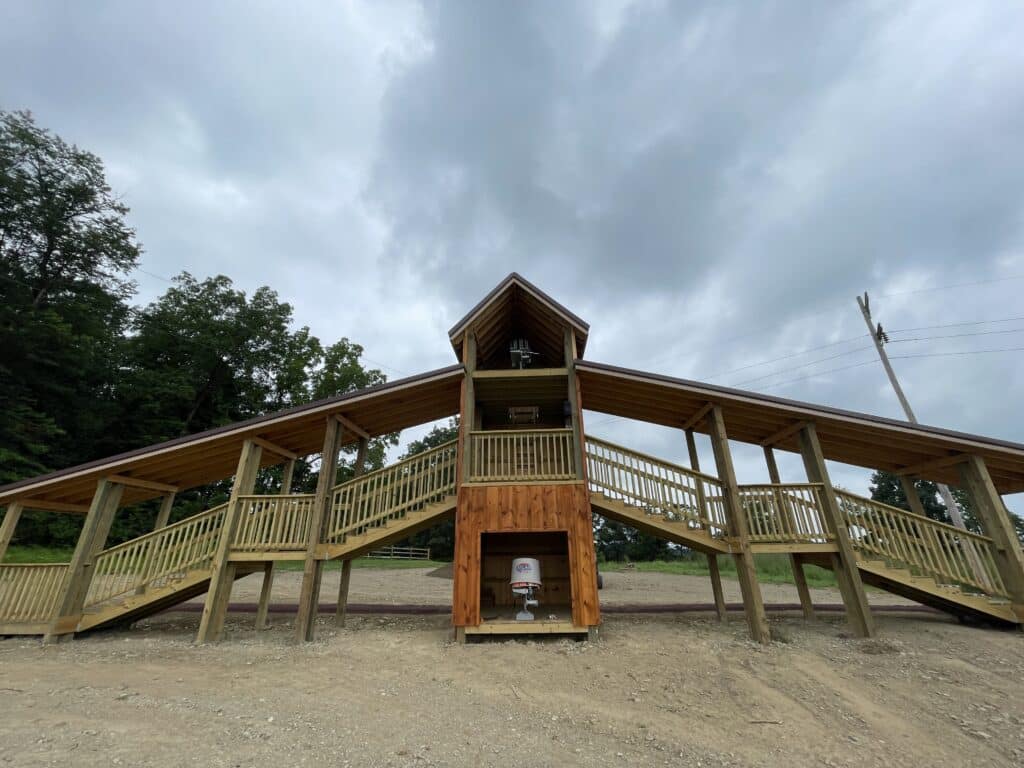
Start with Skeet or 5-Stand
Skeet and 5-stand provide excellent starting points for shooters looking to improve their shotgun accuracy. These clay shooting disciplines offer consistent target presentations that help beginners master fundamental shooting techniques.
Skeet allows new shooters to focus on proper form without worrying about unpredictable target flight paths. 5-stand has participants rotate through five shooting stations, facing different target combinations that simulate sporting clays scenarios.
The controlled environment helps shooters practice lead and timing skills essential for clay sports success.
Dry-Fire Practice
Dry-fire practice offers shooters a valuable way to improve shotgun accuracy without spending money on ammunition or visiting a shooting range. This training method involves pulling the trigger on an unloaded firearm, allowing clay shooting enthusiasts to perfect their mounting technique, trigger control, and follow-through from home.
Shooters can practice their stance, grip, and target acquisition while building muscle memory for proper shooting techniques. The repetitive motion helps develop consistent form that translates directly to better marksmanship during live-fire sessions.
Safety remains the top priority during dry-fire practice sessions, so shooters must always verify their shotgun is completely unloaded before beginning any training routine. Many sporting clays competitors use snap caps or dummy shells to protect their firing pins during extended practice sessions.
Take Lessons with a Pro
While dry-fire practice builds muscle memory at home, working with a professional instructor takes shotgun accuracy to the next level. Certified shooting instructors bring years of experience in clay shooting and can spot technique flaws that shooters often miss on their own.
These experts understand the nuances of sporting clays, skeet, and trap shooting, offering personalized guidance that matches each person’s skill level and learning style.
Private shotgun lessons provide immediate feedback on shooting techniques, stance corrections, and timing adjustments that make a real difference on the range.
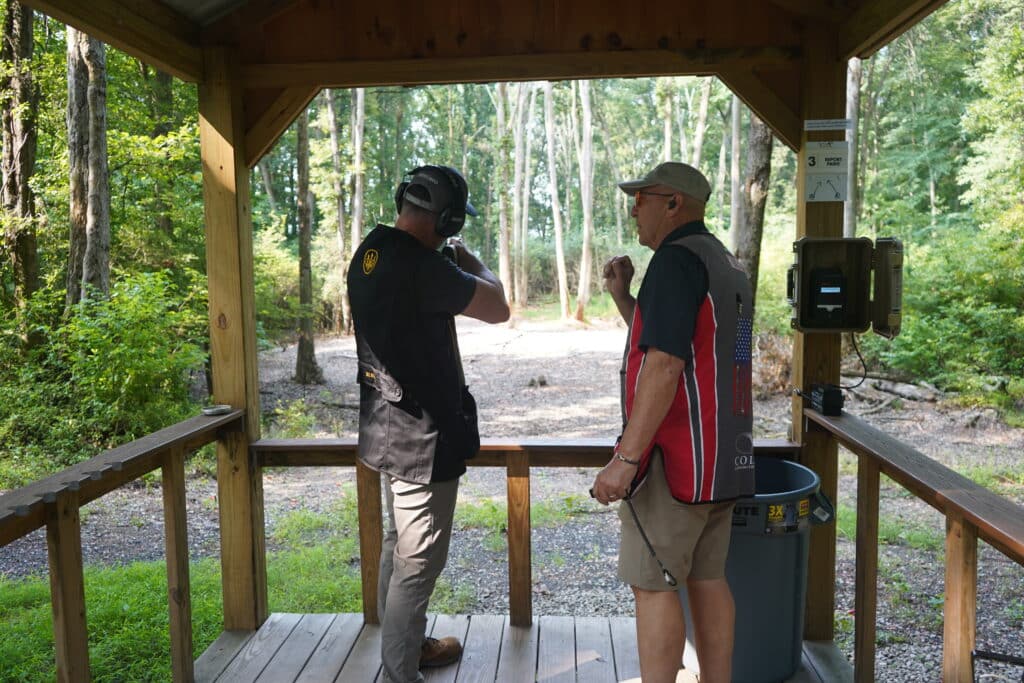
Conclusion
Consistent clay shooting success comes from mastering the fundamentals, choosing the right equipment, and committing to smart, targeted practice. By refining stance, mount, focus, and follow-through—and pairing those skills with the proper shotgun, choke, and ammunition—shooters can dramatically improve their accuracy and confidence.
Whether you’re practicing at home, rotating through 5-stand stations, or breaking targets on a skeet field, each session builds skills that translate into better performance on the range. Safety gear like quality eye and ear protection ensures every experience remains both productive and enjoyable.
Wing Pointe offers the ideal setting to put these techniques into action, with a variety of clay shooting disciplines, professional instruction, and a welcoming environment for shooters of all skill levels. With preparation, focus, and regular practice, you’ll not only hit more targets—you’ll enjoy the journey of becoming a more skilled and confident marksman.
Recent Posts

The Reopening of Keystone Clays as Wing Pointe Sporting Clays
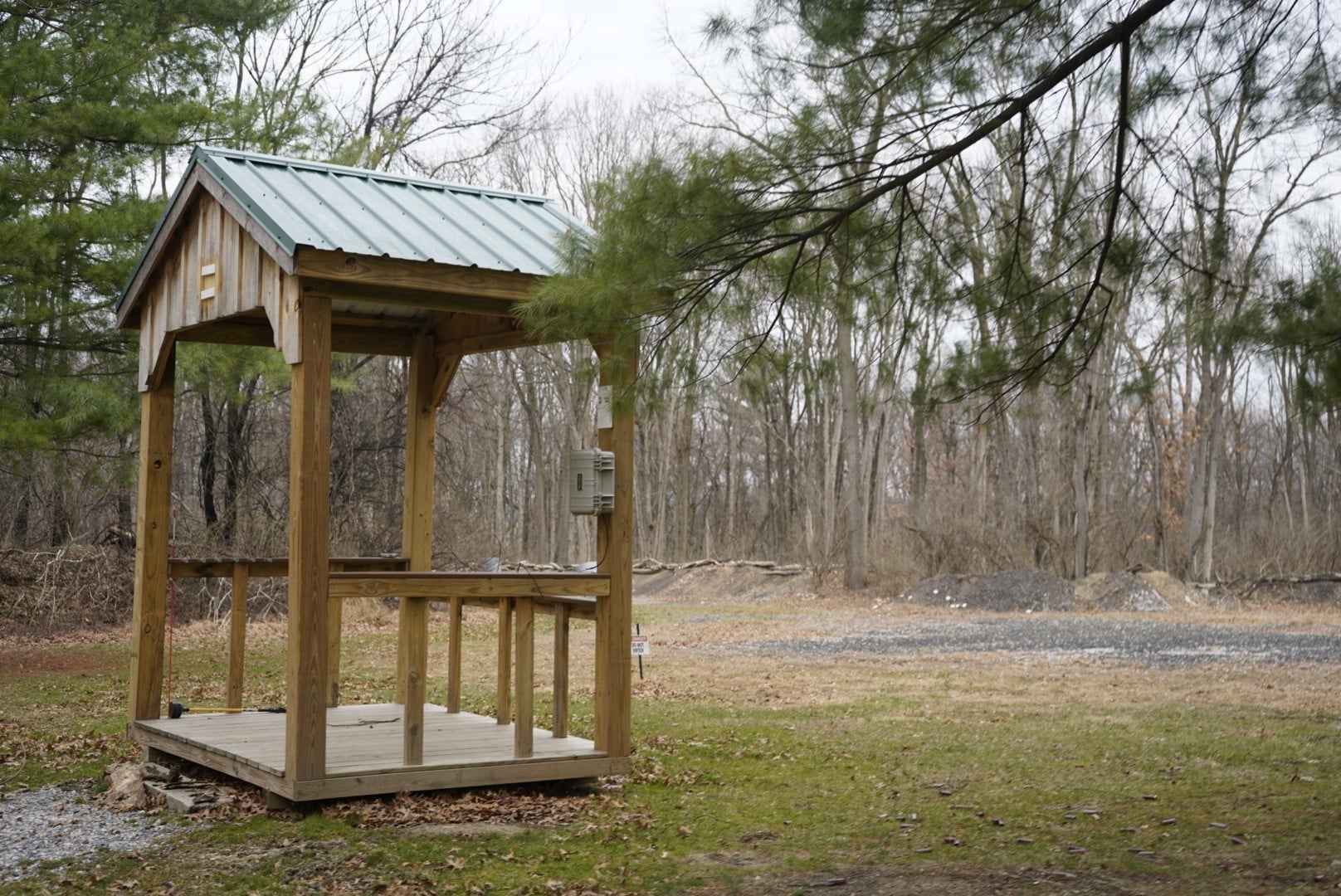
How to Prepare for Your First Time Shooting Clays
